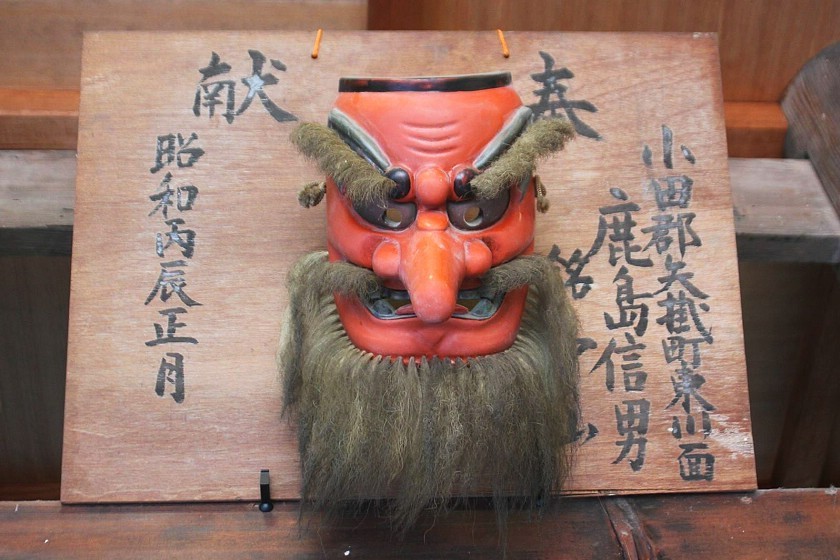Yokai and where to find them: Tengu

One of the most beloved and enduring of Japan's mythological creatures, tengu are a fearsome mix of man and crow believed to live secretly in the woods and mountains.
Most depictions of Tengu fall into two broad types. The more common Konoha tengu are mostly human in appearance, but with red skin, phallic noses and expressions twisted into a menacing leer. Strongly associated with Shugendo (mountain asceticism), they are often shown wearing the distinctive hat and robes of the yamabushi, and make frequent appearances in the local legends of mountainous areas where Shugendo practices have taken place, like Yoshino in Nara Prefecture and Mount Mitake on the edge of Tokyo.

Karasu tengu are curiously amphibian in appearance, with beak-like mouths and blue or green skin, sometimes with a red or orange crest like a cockerel's. These surprising features are very likely derived from Karura - originally a Hindu god incorporated into Buddhism as a guardian figure. Although less common than the Konoha type, karasu tengu can sometimes be seen at temples and shrines - in particular at Kasuga Shrine in Nara and Yakuoin Temple on Mount Takao where their image is associated with the war deity Izuna Gongen.
Most likely derived from ancient Chinese legend, the first mention of Tengu in the early eighth century coincides with the spread of Buddhism from China and Korea. At this time, they were largely malevolent creatures said to abduct children in the forests and cause fires in human settlements. By the Kamakura Period, they had begun to appear often in picture scrolls (e-maki) as a satirical device attacking Buddhist monastaries for their vanity and corrupt practices - at that time a source of great hardship for the peasant class.

Much like the kappa, the image of the tengu appears to have softened over time into something more neutral - a force of nature that be peacefully coexisted with if respected and appeased. The great folklorist Miyamoto Tsuneichi recorded that loggers of Mount Ishizuchi in Ehime Prefecture felt the constant presence of the Tengu around them and asked their permission before cutting down any tall trees with wide, high branches that they may choose to sit on. As late as 1860, the Edo government were said to have posted polite notices to tengu asking them to vacate a rural area ahead of a state visit.
Perhaps the most enduring myth associated with the tengu is that of the otherworldly mentor figure. The oldest and wisest of the tengu was said to be Sojobo, a kind of king in the spirit world who lived on Mount Kurama in the north of Kyoto. His legend became intertwined with that of the famous samurai Minamoto no Yoshitsune, who was forced to spend much of his childhood in exile at a remote monastary on the mountain, and images of the two sparring secretly in the moonlight became a common theme in woodblock prints of the Edo period. This led to something of a trend, with tengu often appearing in the origin stories of famous swordsmen and in martial scrolls (densho).

Today, there are a number of ways for visitors to Japan to delve into the tengu myth. A great place to start is with temples and shrines like Kurama Temple in rural Kyoto, Kasuga Shrine in Nara and Hansobo Shrine in Kamakura where numerous statues and carvings can be seen. The benificial relationship between mankind and the elusive creatures is also celebrated in a number of local festivals, from the Mino Tengu Festival (October 16) at the Saikoji Temple in Osaka, to the Tenkaichi Parade (February 2) in Tokyo's Shimokitazawa neighborhood).






